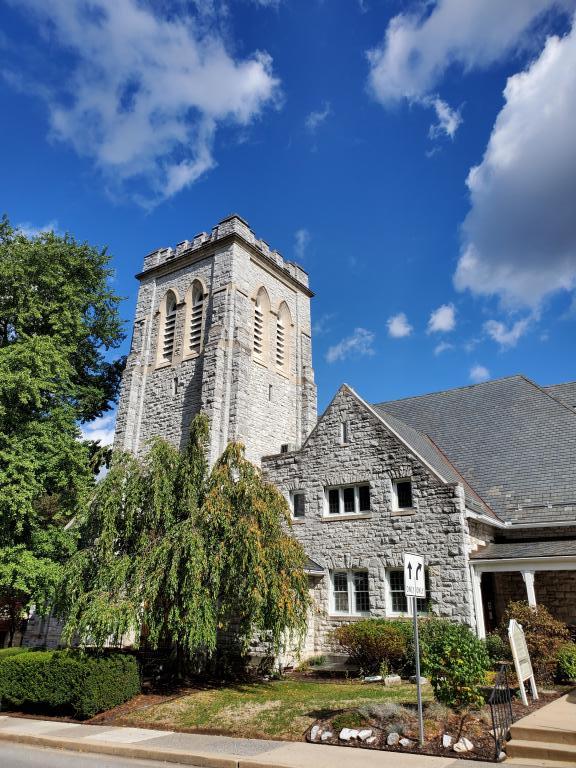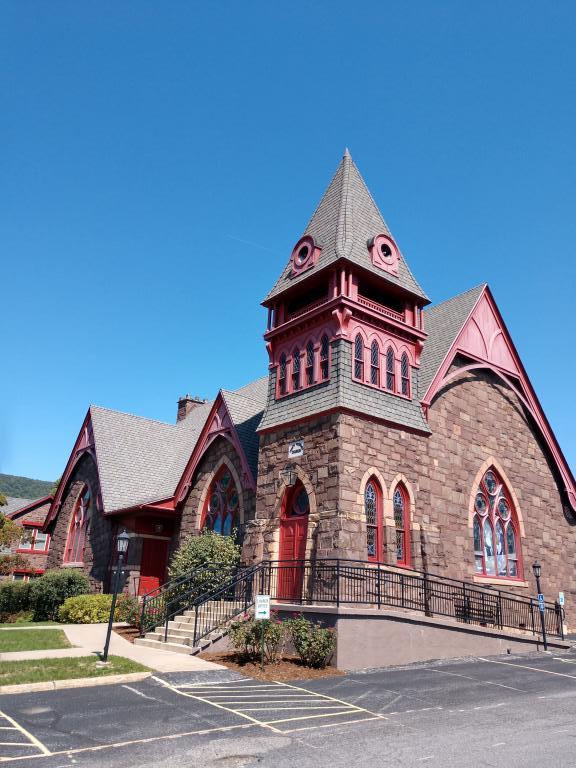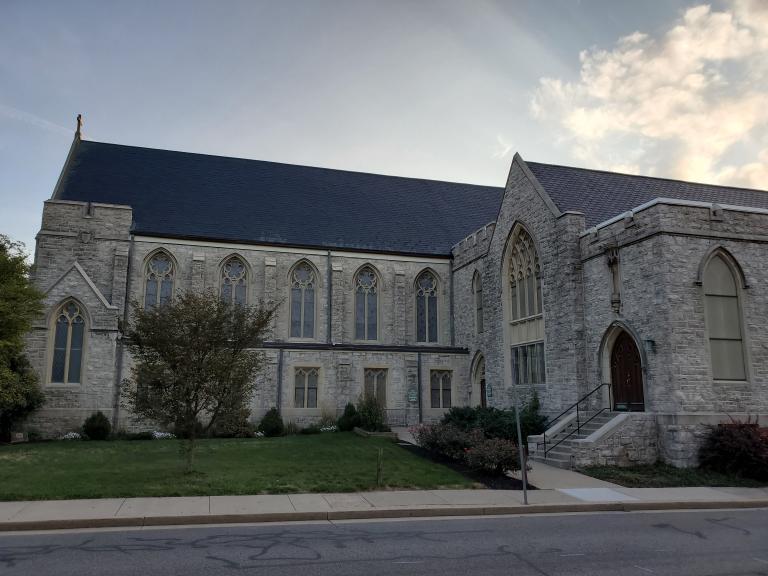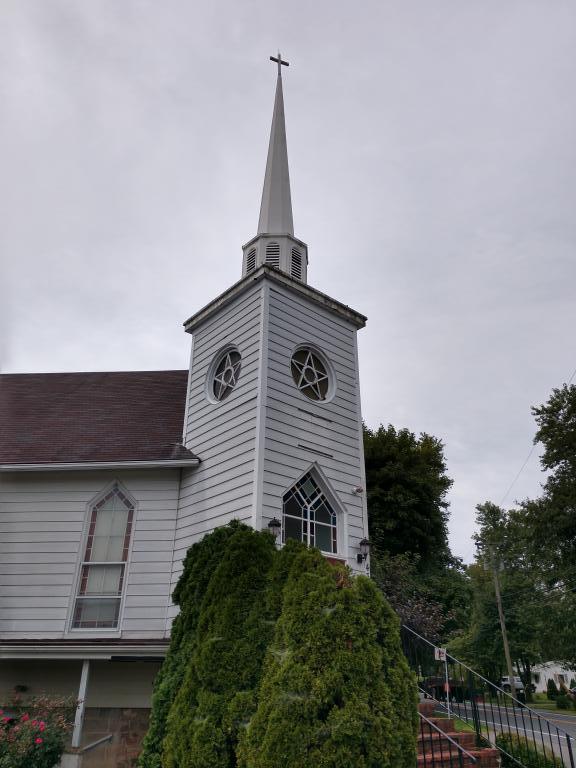This is another in my posts on “reading” churches and their denominations to find what they can tell you about local and regional history, with a strong emphasis on ethnicity. Although I will focus on one area, namely in Central Pennsylvania, a lot of what I say (I think) has much wider application.
When I was growing up in Wales, churches supplied me with a very large part of my education. These were the long lost days before the dark times, before the insurance companies ordered local churches to stay locked always when unsupervised, and generally outside regular service times. In consequence, you could then enter pretty much any medieval church any time, and learn an immense amount about its history, as well as its art, sculpture, architecture, and design, often encountering objects and images of the highest aesthetic quality. All the while, usually, having the place to yourself. On a good day, a substantial church-crawl might take in three or four really old buildings and church-yards. So surely, you can’t compare the lesson to be learned from a thirteenth century British parish church with what you might find in a small village site in Pennsylvania? No – but you can learn lots of different things.
I live part of my life in central Pennsylvania, where I have spent much more time than I expected recently in light of the pandemic. Based in the university town of State College, I often explore the country areas located just a few miles outside town, but which are nevertheless very rural indeed.
Q: How rural are they?
A: The posters about social distancing advise you to stay at least one cow’s length apart. Or two calves. Really.
Every small town and village has a couple of quite imposing older churches, often dating back to the early or mid-nineteenth century. In my particular area, European settlement began only around the Revolutionary War, and not much is visible from before 1800 or so, but tut there was then a major building boom through the first half of the century. Based on a great deal of local church-crawling, I offer the following very general guidelines for wider application.
Everything is Local
The first point is that religious history is strictly local, and the specific things I am observing and describing would not necessarily apply to other parts of Pennsylvania, to the Western or North-Eastern industrial areas of the state, nor to other rural regions. And as to other states, good heavens, no. The principles apply, but the details of economics and ethnicity, of immigration and denominations, vary enormously within just a few miles. That does not mean that findings in this part of Pennsylvania don’t have wider application, and some can be extended across the country, in cities as well as villages. You just have to be very careful about the details. Nuance is all, and the devil is in the denominations … I can’t believe I said that.
As I described in earlier posts, American religion is highly congregational in tone, but denominations still matter as badges of ethnicity and class, at least as much as theology or social teaching. My personal map of this particular area notes denominations as key markers. Where there are Presbyterians, there were Scotch-Irish, very likely arrivals from the years between 1770 and 1830. Germans – Lutheran and Reformed – are the next generation, and on through the nineteenth century. Those German churches can take a little work identifying, because of subsequent mergers and acquisitions. The once very important Reformed later joined the United Church of Christ, UCC, so UCC churches proliferate in these small rural communities.
The Methodists are a confusing bunch. Yes, there were early British/Irish-oriented Methodists in the area. But in the nineteenth century, there were small and Methodist-ish German denominations, such as the Evangelical Association (Evangelical Church) and the United Brethren, who over time merged into the United Methodists. You have to be attentive seeing a United Methodist church today, to see if it had those German roots, or if it had an Anglophone origin.
This set-up was novel to me in various ways, particularly the very strong German grounding. I don’t believe I ever saw a Lutheran church (for instance) in the UK. There might have been a couple in big cities and seaports, to service Scandinavian crews and visitors, or German emigrés. Pennsylvania was my first lived introduction to German realities, and they are everywhere.
Moving On Up
People build churches as expressions of community, and as communities change, so religious buildings alter and evolve. If you date religious buildings with fair accuracy, you can see new social groups emerging, and others vanishing. In the areas of my observation, the basic realities fit the four foundational groups – Presbyterian, Lutheran, Reformed, Methodist. When you see other groups, you can be pretty sure that they arrived to fill some later niche. See the Roman Catholic church for the rise of industrial populations, often the groups building the canals or railroads, or working in the mills. That’s not entirely true, as you can find German Catholics settling as farmers and merchants but they are rarer. Then, a bit later, you find Episcopalians settling, as a town acquires some social pretensions, and some professional prosperity. Like I say, the picture would be different elsewhere, for instance in New England or Maryland, but those are different ecclesiastical planets from Pennsylvania.
As a town booms on the basis of some form of industrial or commercial wealth, so the old established churches rebuild, often on a very impressive scale. Tell me the main denominations with the grand old buildings, and I will show you where the lawyers, merchants, professionals, and mill owners went to pray. In many or most older towns, those churches follow a similar pattern, arranged in rows along a block or two, with a very predictable range of denominations. These are the blocks where you can’t throw a stone without hitting a mainline church, and usually breaking a rather fine stained glass window. Usually, they are not too far removed from the county courthouse, if indeed you are dealing with a county seat. Sometimes the Catholics are in the same region, sometimes they are a few blocks away, literally across the tracks. If there is a Black church, usually AME, it will be located discreetly and humbly.
Right in the middle of those Protestant mainliners, you will pretty much always find the Masonic Temple, usually built on a scale very comparable to the grandest Presbyterian or Methodist quasi-cathedrals. Some people might try to write the history of mainline churches in the US before the 1960s without taking account of the Freemasons, but it is a fool’s game. Except for Catholics, always assume that the leading local clergy were Masons, and that is true across the country.
The Great Rebuilding
The better you know the roots of those mainline churches, the appearance of many of those buildings should surprise. Many originated in Reformation struggles where visual or material symbols of faith were deeply controversial. As large stone churches proliferated in the nineteenth century, and denominations frankly competed to produce the most impressive buildings, so they used a standard range of decoration, following standard architectural guides. Hence Presbyterians and Reformed found no obvious problem in very classically “churchy” products with stained glass windows and sculptures, even with angels and stone crosses. The reactions of their iconoclastic ancestors to such innovations are not recorded. The fact that we don’t find such things startling is testimony to how thoroughly those once “High” styles and customs were mainstreamed and normalized.
Looking at a stately neo-medieval church in a midsize town, it is very difficult indeed to locate it according to denomination. As a case in point, I offer a handsome church of the sort that you might find in any American town or city from the expansive era between 1870 and 1940. This particular example is located in State College, and it dates from 1913. But what is it by denomination? You could easily believe Episcopal, or Methodist, or Lutheran, or even Catholic. It is actually Presbyterian, specifically PCUSA, although no architectural indicator points to that fact.
Here is what I consider a lovely church in a smaller Pennsylvania community, namely Centre Hall. In this case, the architecture gives away its German origins, and it was originally German Reformed (it is now UCC). But with its medieval reminiscences, it could easily belong to any of the other mainliners.
Or how about another very pretty medieval imitation, drawing on fourteenth century English Gothic style, complete with stained glass windows? This one (built in 1932) was also Reformed, but is now UCC.
Without any empirical evidence whatever, I offer the suggestion that sharing common styles of church appearance contributed to reducing denominational hostilities and contentions, and in the twentieth century, promoted a sense of a common mainline identity. It certainly took a lot of the old debates about images off the table.
The Only Constant is Change
The buildings you see often did not begin with that particular affiliation. Changes at national level have their impact. I have already written about how denominations change over time, so that a German Reformed church (say) became a UCC institution in the 1950s, usually with little trace of that in the signage. If you didn’t know that history, you would not be able to find out by simply looking. Sometimes a foundation stone allows you to trace the story, but you have to get used to older labels and acronyms. “M.E.”, for instance, signifies Methodist Episcopal.
As communities get wealthier and move on up, so buildings change ownership in ways that can confuse. A congregation expands beyond its original building, or develops higher aspirations, and builds a grander new facility. But the older church building survives and is sold to some other group, so that one historic building can pass through multiple hands. As a case in point, I was looking at one grand UCC church that I knew had previously been Reformed, but was baffled why it had no confirming foundation stone. Then the reality struck. It was built as a first Presbyterian church, which the congregation occupied for a few years, before their aspirations grew even higher and they relocated yet again. When the Reformed moved in, they must have purged that foundation inscription, perhaps as part of a general remodeling.
In more modern times, the move away from historic structures is driven by factors other than growing wealth. It usually reflects demographic factors as the congregation moves out to the suburbs, while the quest for adequate parking for cars inspires new building in the suburbs. Historic buildings can then face several fates, from simple ruin to redevelopment in some other form, as private homes or artists’ studios or community centers. But many continue the sequence of passing to new and rising denominations.
Sometimes, those transitions produce startling results, and I know of cases where really venerable nineteenth century buildings have been acquired by very modern Pentecostal denominations, producing something of a culture clash. One example I cherish involved a very impressive village church of Victorian date where the new Pentecostal owners had put up a sign proclaiming “Established 33 AD”, causing near-road accidents as startled passers-by wondered about improbably early Christian missionary endeavors to Central Pennsylvania.
As a less subversive image, I offer this photograph of what was a historic Methodist church in a small village. You would be unlikely to guess that today it is Seventh Day Adventist, a fine denomination but not one usually associated with anything like this kind of architecture.
From my own professional work, I love seeing these processes continue, as old and fading churches with seriously aging congregations revive almost overnight as they initially share space with some new immigrant group. In recent years, the old urban churches have sprouted a lot of Korean signage, not to mention Chinese, Spanish, and so many other languages. Neatly reproducing the older lessons, you can with a little effort trace the origins of those newer congregations with some precision. In the nineteenth century, the newcomers were often not “German” but rather came from some particular region or principality, with its own traditions, which remained alive in the new country for a generation or two. Today, Latino congregations today can be no less diverse internally, and it pays to learn something about the map of Mexico (say). As with the German precedents, follow the food on offer at the fund-raisers, and it will usually point you in the right regional direction.
Of Things Not Seen
I have talked about the main denominations that you see, but scarcely less informative are those that you don’t encounter in particular areas. Some might surprise outsiders. In the area of Central Pennsylvania I am describing, Baptists often do not appear in that early stratum of congregations, and were later additions. In agricultural areas where the Germans and Scotch-Irish so predominated, the Baptist presence was often imported by later English industrial migrants, and mainly confined to regions near mines, mills, or ironworks.
Many years ago, the British humor writer Stephen Potter advised readers how to bluff their way through difficult social situations, when they are caught out speaking about matters on which they are quite unqualified. Imagine that you have just made an impressive-sounding pronouncement about conditions in, let’s say, Uzbekistan. Unfortunately, another person in the group has just returned from some years living and working in that country, and objects that your observation is totally groundless. Stephen Potter advised that you instantly agree with the person challenging or contradicting you, but that you should also nod sagely and add “Ah yes, it’s different in the south.” Needless to say, I would never play such a dishonest trick myself (although the saving tactic does indeed work wonders) but that maxim wholly applies to studying American churches and denominations. Much or most of what I am saying here really is different in the south.
Some things apply, especially about the grand historic churches clustering in select streets of small or midsize towns. But the weakness or absence of Baptists marks a critical difference, and the communities I am describing very rarely have anything like the palatial “First Baptist” edifices that are such a stunning part of the architectural landscape across much of the South. That picture changes somewhat when you wander into the suburban developments and see the newer constructions, where Baptists stand alongside Pentecostal and non-denominational structures. But that just is not true in most of the older areas.
To return to my point about the localism of American religion. If you wander Texas, you will everywhere observe those two mighty and widespread groupings, Baptists (of countless shades) and Churches of Christ. Realities are very different indeed in the North-East and Midwest.
Forward to the Past
Beyond Baptists, other omissions will also strike in the Pennsylvania areas I am talking about. A familiar stereotype links Pennsylvania history with Germans, and surely, that means Amish and other sectarian groups, such as Mennonites and Dunkers. Well, yes, you can find such older churches, but you have to look further afield in the countryside. One historical lesson you learn early about that immigration history is that the vast majority of newly arriving Germans were Christian and Protestant, but belonged to one of the two great institutional strands, the Lutheran or Reformed. They were “church people,” with the “sect people” a small if visible minority.
All of which brings me to a small oddity. If you live in the classic college town of State College, it is a very modern community with few surviving older remains, apart from the churches. But travel twenty or thirty miles and you are deep in an Amish countryside that looks like 1850. Joseph Yoder’s classic 1940 novel Rosanna of the Amish is set about 25 miles from State College. Such a contrast between modern town and older countryside is familiar in Europe, but there is a special story in this part of the world.
We often tend to think that the Amish must always have been in the areas we find them today, and that’s often not right. There has been a lot of change over time, and that is still very much in progress: Amish communities are surprisingly dynamic. Among other things, Rosanna tells you about very old Amish settlements in the Centre County area that the Amish gave up in the nineteenth century, before moving on elsewhere. Now that’s something we don’t often think about: whoever goes looking for the traces of such ex-Amish areas? But at the same time, however archaic they may seem, at least some of the modern-day Amish communities are very recent arrivals, as new migrants have built upon small older settlements. As Amish families prospered in familiar landscapes like Lancaster County, they wearied of all the traffic and tourism. In recent decades, many set up or expanded colonies in the center of the state, and these continue to expand. Witness the steady spread of those buggy road signs.
In this central region at least, the future looks ever more medieval.

















